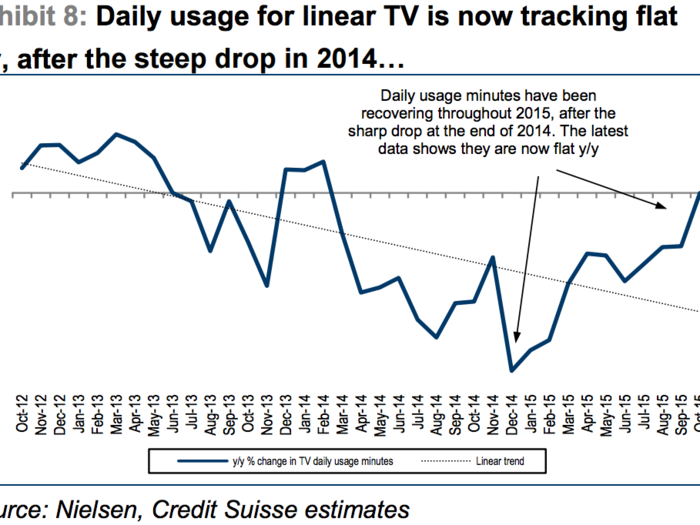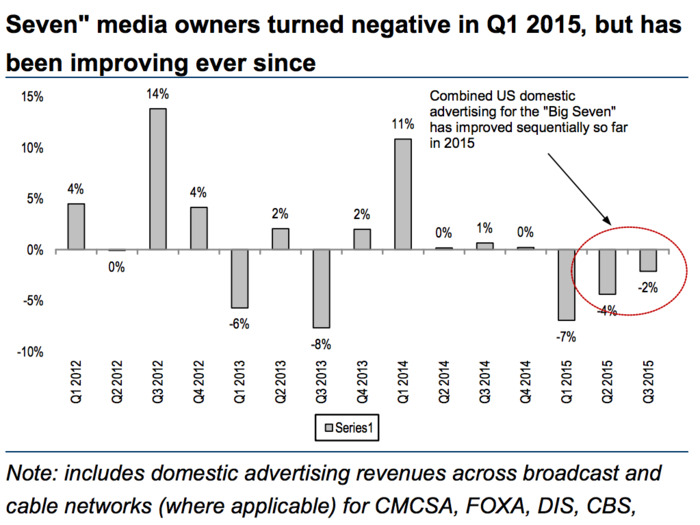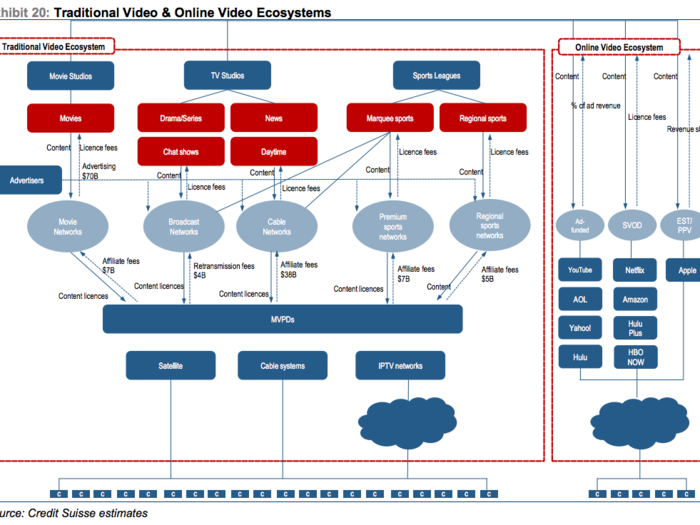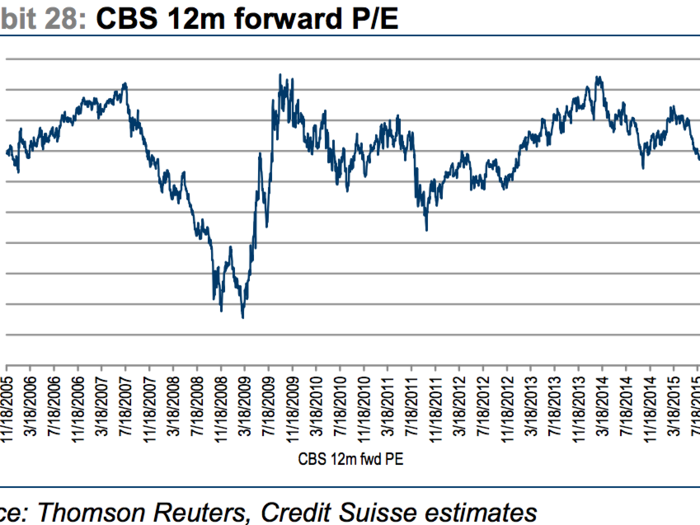People are watching more linear TV, while Netflix watch times have remained the same.
Another trend that doomsayers have pointed to is that the amount of time that viewers were spending with traditional TV dropped, while minutes spent on over-the-top services were rising.
This is no longer the case, as cable watching has improved, increasing over 2015.
"The latest data, for October, shows linear TV usage is actually flat year-on-year at 274 minutes per person per day," he wrote.
Additionally, he notes that over-the-top consumption has plateaued.
Advertisers are coming back to traditional TV.
The lifeblood of the traditional cable model has always been advertising. Concerns over the willingness of companies to spend on a dying medium began to emerge along with the cable-cutting phenomenon, Sheikh said, but again the numbers suggest this is overblown.
"The evidence from Q3 was that domestic advertising revenues (broadcast + cable) declined again, but at a slower rate; and the commentary from media owners about the strength of pricing in the scatter market suggests a further improvement is likely in Q4," Sheikh wrote.
Cable companies are figuring out more ways to make money.
Even with the possibility of declining viewership and advertiser revenue, Sheikh said he thought TV content creators and providers were finding new ways to make up that revenue. This not only helps them stabilize revenue, but could help the linear TV business as a whole.
"We also believe that direct-to-consumer offerings will give content owners the opportunity to exploit the growth opportunity in the emerging online video ecosystem themselves, rather than allowing third party platforms to dominate," Sheikh said. "In so doing, content owners should be able to build profitable revenue streams outside traditional video which offsets the headwinds they face from a shrinking pay TV universe."
The headwinds now will become tailwinds later.
There are challenges, Sheikh acknowledged. Issues include reduced ad loads to attract customers, a possible slowdown to licensing revenues from Netflix and Hulu as content companies offer programs exclusively on their services, and the increased cost of developing these new services. Sheikh, however, sees all this improving.
"Lighter ad loads improve the consumer experience, so should slow down the shift to alternative platforms; holding back content from third party SVOD platforms should have the same effect; and direct to consumer costs should help content owners generate new, high margin, revenue streams," the note said.
These reasons mean the stocks' current valuations are relatively cheap.
With the possibility of the cord-cutting narrative turning around, Sheikh said, also comes a buying opportunity for investors.
"Most [media companies] show valuations at modest levels in absolute terms, and also versus history," he wrote.
"We favor stocks with exposure to the highest quality content; where earnings forecasts look sustainable; and/or where we see restructuring potential."







